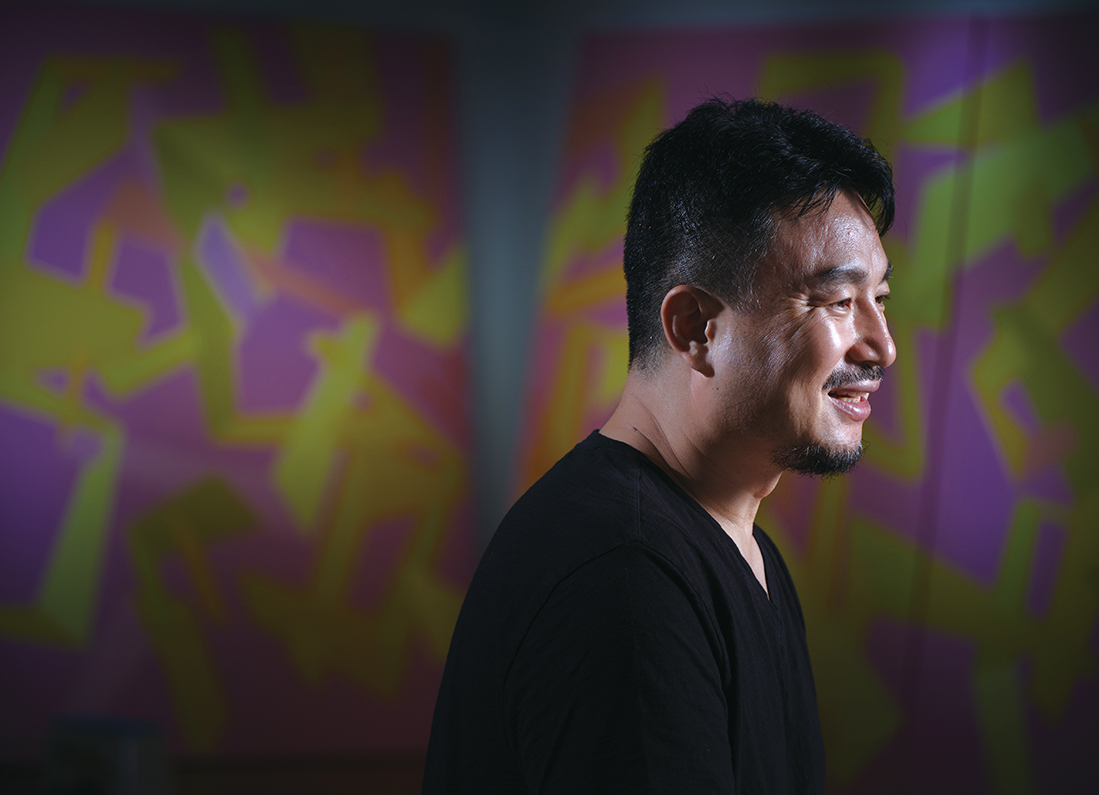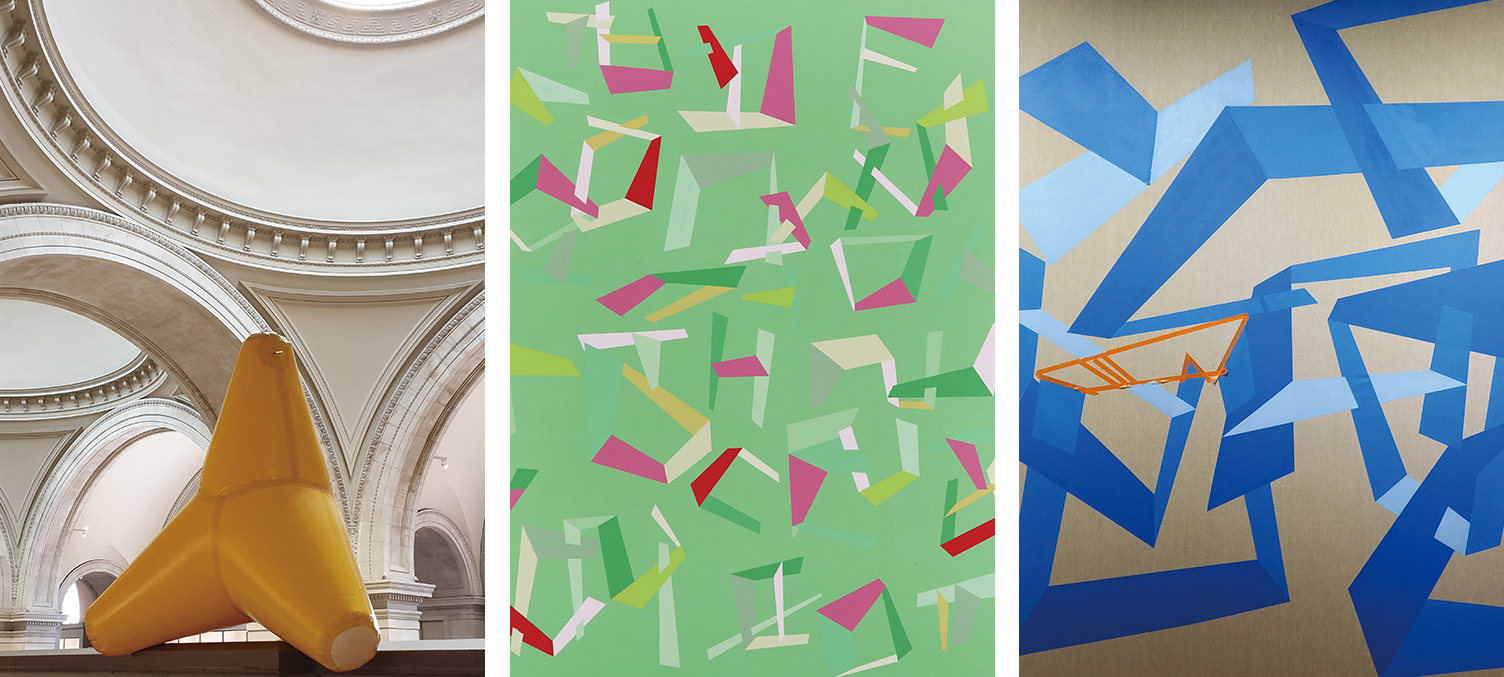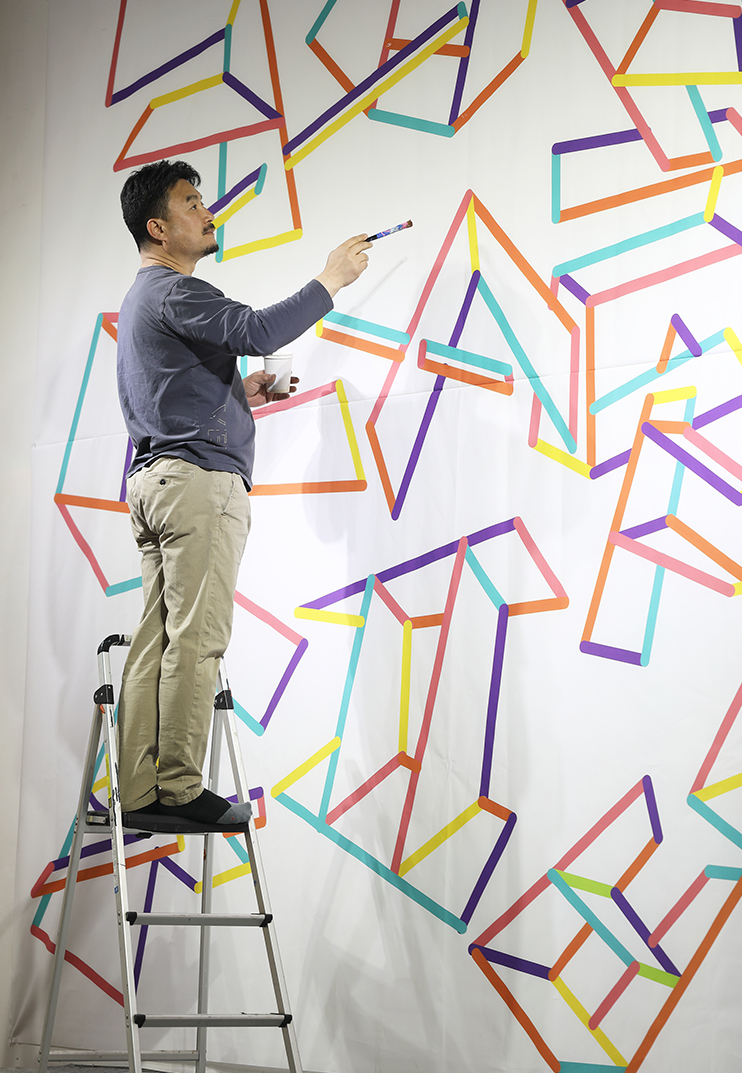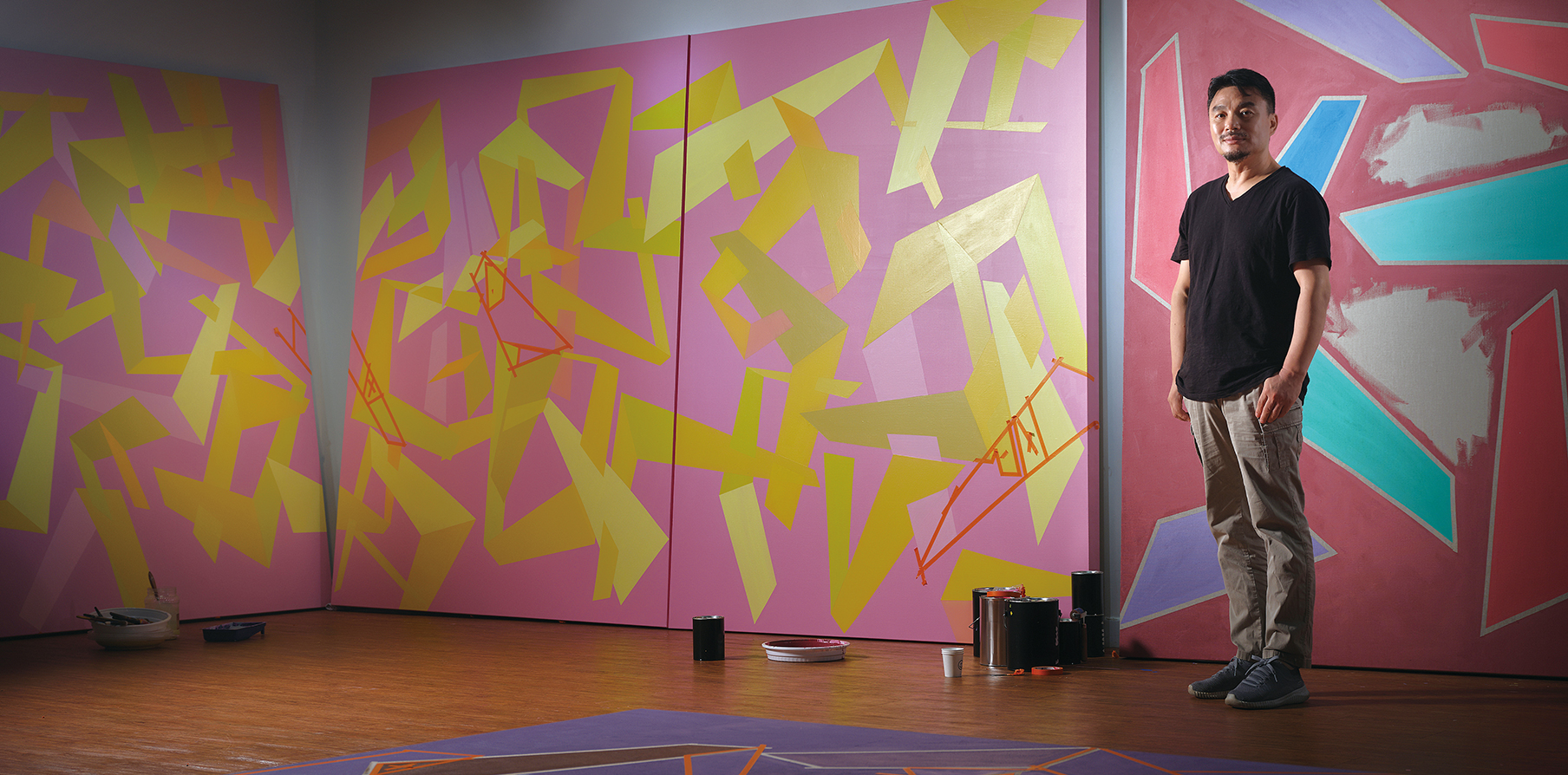Interview
Championing Hangeul
Humble Artist & Benefactor
Kim Boseong has pioneered a realm of Hangeul art divergent from typographic renderings or handwritten letter designs that treat elements of the Korean alphabet as unique artistic components. He is most famous for his tetrapod installation works featured since 2015 by the sea in his hometown of Yeosu, Jeollanam-do Province, and at the Metropolitan Museum of Art in New York, among other locales.
Written by• Kim Jane
Photographed by• Studio Kenn
A longtime patron of the arts, Kim Boseong is so generous that his benign intentions have often faced skepticism. After 35 years of working as an artist and eight years of hosting exhibitions and artistincubating programs at Kim Boseong Art Center, he is permanently leaving at year’s end.
Free as a Bird

Kim Boseong says Hangeul exudes warmth.
Nestled in the upper east side of Seoul’s Junggu District, the center stands shoulder to shoulder with other renowned galleries. Since opening it in 2013, Kim has managed the facility to support the arts and their players.
So why he is leaving his center? “I made the decision several years ago. It took me a while to get myself to put it into action. Though it’s something I knew I wanted for myself, truly letting go wasn’t easy at all,” he said. “Letting go” could be a massive understatement considering the lucrative financial value of the land on which his center stands.
What will happen to the gallery? “Arrangements to transfer ownership to the gov’t are being processed. I’m donating it to a suburban municipality on the condition that it be used for hosting artist exhibitions at no cost,” he said.
“I guess it’s about time for me to show them that my own finances, or any subsumed abundance thereof, don’t account for my donation activities. Not to say I didn’t want this for myself, too. From 2021, I’ll be starting from the bottom, literally from scratch, from a place where I’m stripped not only of modern living necessities and convenient utilities but also of the accessibility and resources that my credentials have granted me all along, especially while managing my art center.”
What will moving to an unpopulated island in his southern coastal hometown of Yeosu do for his welfare or artistic career? “Believe me when I say it was difficult to execute long after the decision was made. But you know what? Once I completed the arrangements, I felt truly liberated. I realized that the center, with all its luxuries, had kept me caged all along. Now I’m a bird free to fly and venture out on my own,” he said.

Kim Boseong’s life-size installation work is displayed at the Museum of Modern Art in New York.(Left), The artist says his Hangeul portrayals yield the impressions of gaiety and jovial dancers.(Center, Right) © Kim Boseong
Radical Inclusivity
Kim’s goodwill caters to not only struggling artists but also those prone to marginalization. He has long invested in discovering domestic talent either old or young and trained or untrained with zero consideration of their backgrounds. Contrary to his early literary debut as a poet at age 19 and subsequent artistic activities, Kim hadn’t come from formal literary or artistic training. Just as he built his career via sheer and staunch devotion to Hangeul and its multiple forms of expression, he seeks artists fiercely devoted to art, which he calls “arduous labor.”
Kim’s artworks are not confined to a genre, style or even a form of art besides the consistent theme of Hangeul. “I never heeded conventions whether in artistic genres or societal standards,” he said. “My inclusivity-oriented approach, both in my treatment of varied artistic components and intent to broaden public accessibility to the art world, stems in part from my philosophical and religious studies, and of course, my experience living abroad for 15 years.”
Though Kim has utilized various materials thus far, he sees no limit in what else he can explore. “I’d like to integrate into my works future-facing technology like V/AR, AI and 3D printing.” He opts to challenge himself on a consistent basis, expanding artistic terrains.

The artist’s Hangeul-inspired works comprise a colorful visual feast. © Kim Boseong
Keeping His Word
Among Kim’s wide-ranging endeavors and work scope, his interests even segue into formative Hangeul architecture. Pointing to his 3D works, he said, “I dream of Hangeul-structured buildings. Though they seem like sculptures or tangible figures at first glance, I’d like to see them developed into grandiose architectural structures.”
On what his favorite words are, he said, “I used to be fond of the term yaksok (promise). My new favorite is wanju (completion) which is more precisely translated to ‘finishing the course.’ To complete something, anything really but especially something that means a lot to oneself, and that subsequent feeling of reward is one of life’s greatest joys, a moment I’ve come to value whether as a human or an artist.”
Korean Dignity
Even to users, the linguistic origins of the term “Hangeul” are not well known. Kim Boseong said, “The composition of the han consonant or syllable is based on the root word or hanja (韓) for ‘universal’ or ‘cosmic’ and geul for ‘communication’ meaning something shared. The combined definition of these root words impart how grand we Koreans are. That to me is the essence of Korea — of us Koreans — that Hangeul by definition represents.”
Driven by an innate affinity for Hangeul, Kim Boseong said, “That belief in our nation and our people as a minority ethnic group was what propelled me to persist even before anyone started acknowledging my artwork or giving me the time of day.”
“So many of our nation’s youths need to hear the message that ‘you’re enough.’ Through Hangeul, I seek to empower and acknowledge the greatness of Koreans and offer all the warmth, joy and encouragement Hangeul embodies.”

© Kang Youngho




















